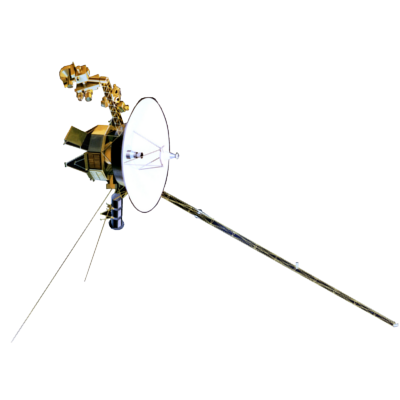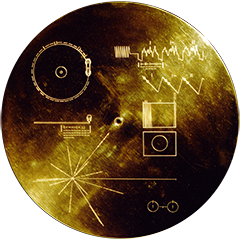Voyager LECP Data Analysis Handbook
Calibrations and Channel Definitions
The Voyager (MJS) LECP Pulse Height Analyzer (PHA)
The MJS LECP Pulse Height Analyzer
A block diagram of the Low Energy Charged Particle (LECP) experiment is available as S1P drawing 1E0103 (check for latest revision), "BLOCK DIAGRAM Low Energy Charged Particle Experiment, MJS-77 Spacecraft." The Pulse Height Analyzer is centrally located and within the Pulse Circuit Assembly (PCA) on this drawing. This PHA monitors analog pulse inputs on the five lines D1 through D5 corresponding to particles incident on the LEPT detectors one through five. Additionally the PHA measures two DC levels shown as I alpha and I beta. The lines at the right of the PHA section are digital control and data lines interfacing with the experiment Command and Data Assembly.
During the journey to Jupiter, the experiment remains in the Low Energy Particle Telescope (LEPT) mode of operation. The PHA peak detectors are ON allowing measurement of four simultaneous detector outputs when requested by the DATA electronics. The short (typically 3 microsecond positive pulse) input signals are stretched for 1 millisecond to allow an analog to digital conversion of the amplitude. The A/D electronics produce 10 bits of binary code, the eight most significant of which are stored by the experiment data system. Either of the two redundant A/D converters may be used. Calibration is accomplished as desired to confirm internal operation.
As the Voyager encounters Jupiter, the Pulse Peak Detectors are turned OFF (data rate will be too high for effective operation) and the PHA monitors the leakage current of the alpha and beta detectors within the Low Energy Magnetospheric Particle Analyzer (LEMPA) portion of the experiment. All ten A/D bits are accepted by the data system providing resolution of 1/1024.
The Basic PHA
Refer to the Block Diagram Figure 2 and Data Timing Diagram Figure 3. The PHA is a fully redundant unit with the exception of the Peak Detector circuits. Independent control electronics, A/D converter logic, reference voltages and multiplexers allow operation with multiple failures in any one unit. This may be used to advantage if degradation of one PHA occurs during encounter with the Jovian magnetospheric radiation region.
The operating modes for either PHA are illustrated in Figure 3 by the Table of Output Data. Six sequences are possible for either PHA. A both OFF condition by command is also included, providing a total of 13 different operating modes. The operating mode is selected by three digital lines from the Command and Data assembly to the PHA presently under power. The three signals, "Calibrate," "D1/D5 Select," and "LEPT/LEMPA" provide six output sequences since "D1/D5 Select" has no meaning when in LEMPA mode.
The main PHA power is switched to provide a very low standby drain (see the Table "Specifications"). Receipt of a "GO" pulse from the data section powers up the full electronics for the 1 millisecond measurement interval. The PHA turns itself back to Standby at the completion of the data conversion. The only external mechanism causing continuous PHA high power hangup is loss of "Clock." If this occurs, power may be removed by command.
The PHA is synchronized to the data system 50.4 KHz clock. The clock pulses control four timing lines in each PHA. These timing lines, "Busy," "A select," "B select," and "Output Time," allow serial data transfer during any arbitrary time interval. The A and B Select lines determine which of the four words is being shifted and the "Output Time" establishes the interval of data shifting. "Busy" signifies a measurement is being made. Data appears over a fifth line.
Figure 2 shows the interfaces. Five pulse inputs (to peak detectors) or two voltage inputs are to be measured. Five control lines provide a GO signal and mode control to the PHA under power. Two "PHA Power" inputs select either or no PHA (both ON is prohibited in external logic). Five output lines from the PHA in use supply timing information and data output to the experiment Command and Data section.
Return to Calibrations main page.
Return to Voyager
LECP Data Analysis Handbook Table of Contents.
Return to Fundamental
Technologies Home Page.
Updated 8/9/19, Cameron Crane
VOYAGER 1 ELAPSED TIME
*Since official launch
September 5, 1977, 12:56:00:00 UTC
VOYAGER 2 ELAPSED TIME
*Since official launch
August 20, 1977, 14:29:00:00 UTC
QUICK FACTS
Mission Duration: 40+ years have elapsed for both Voyager 1 and Voyager 2 (both are ongoing).
Destination: Their original destinations were Saturn and Jupiter. Their current destination is interstellar space.



